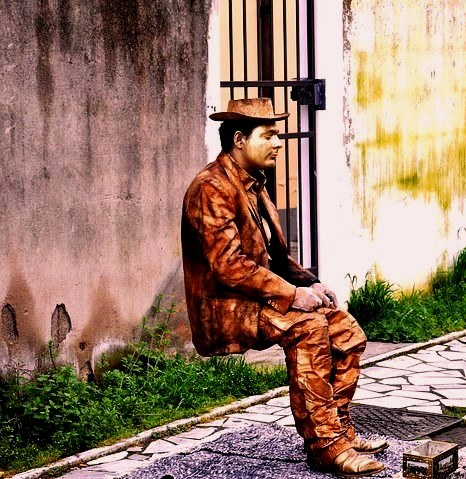For those of us who are content creators, nothing swallows valuable time during the day like the image search. We all know that visually exciting media will freeze the reader in place, achieving the main goal of grabbing attention long enough to make them interested. If your content kicks off with something that has color, drama, and a unique approach they are more likely to stick around. Also, more appealing images are likely to make your content more sharable. The trick is how to accomplish this with consistent results.
 Be creative
Be creative
One of the tools in the content creator’s toolbox is the analogy. ‘Have you ever noticed that A is a lot like B?’ Analogies often generate visual images. I once compared traditional marketing to the rotary phone, which enabled me to use a photo of a rotary phone that I had hanging around. I’ve used this tactic multiple times, and it always gives the blog a solid beginning. Hopefully, the reader becomes curious by the insertion of a picture seemingly unrelated to the topic. One of the most shared posts I’ve made in the last year came with a picture of an outhouse!
Sometimes, it helps to start with the image, and build the rest of the content around that. This often requires storytelling. A picture of two people with cell phones open at a park bench should have you asking, ‘What is going on here?’ From this simple question, spin a tale about marketing for the mobile user.
Like a picture so much that you want to use it again? There’s nothing wrong with that. Crop it, or apply a color filter to it. There are lots of ways that you can alter a good photograph’s appearance so that it won’t immediately look like a rehash to your regular content reader.
You can also save yourself major headaches by taking the photo yourself. Don’t like the options you’ve found in your search? No prob. Pull out the camera and snap an award-winning pic that combines all the best ideas in one. Videos in HD are just pictures at 30 frames a second. Use a screenshot from one of your videos, if you think it serves your needs. You might even have old family photos that could work. Surreptitiously stick your URL in the corner of the image, though, so that anyone who wants to use it in the future can ask for your permission.
The Search
How, then, do you find professional images? Well, don’t use Google Images. No, really. Don’t. You may find a picture somewhere that you want to use, and if you track down the photographer, ask permission, and make arrangements that are clearly defined as to the use and attribution of the piece, then great. Simply taking a picture that you like from the Internet, however, and posting it to your site is outright theft, and you don’t want to face the consequences.
There are sites which offer free use of images, and I use them frequently. Bear in mind that there may still be restrictions on their use, so do your research thoroughly. You’ll also need to apply the creative juices when conducting a search on these providers. Good as they are, these sites aren’t the equal of Google. Try using as wide a net as possible when casting about on their search engines. Free is free, however, so don’t complain if the process takes a little longer. My favorites are
And, of course,
Make sure when you search on Flickr that you choose use for commercial purposes if you plan to use the photo on a business blog. Since this is so important to understand, Creative Commons has established a guide for using their photographs.
Also worth considering
- Drawings, videos, and charts are illustrations that can have all the impact of a photograph. Go to the vaults for inspiration, or ask an in-house graphic designer if they have something in their files that could work.
- Keep it clean. If you aren’t sure if something is appropriate, it probably isn’t.
- Placement is important. I like embedding a photo on the right of the text, but this isn’t always ideal. Feel free to go against the norm if the situation calls for it.
- Use alt tags. By adding the right titles and tags to any of your images they become easier to find, and will help your SEO.
The right picture will pull the viewer in. Know where to look, choose carefully, and weave the visual magic into your post. It can be the key to the success of your content, hidden in plain sight.



